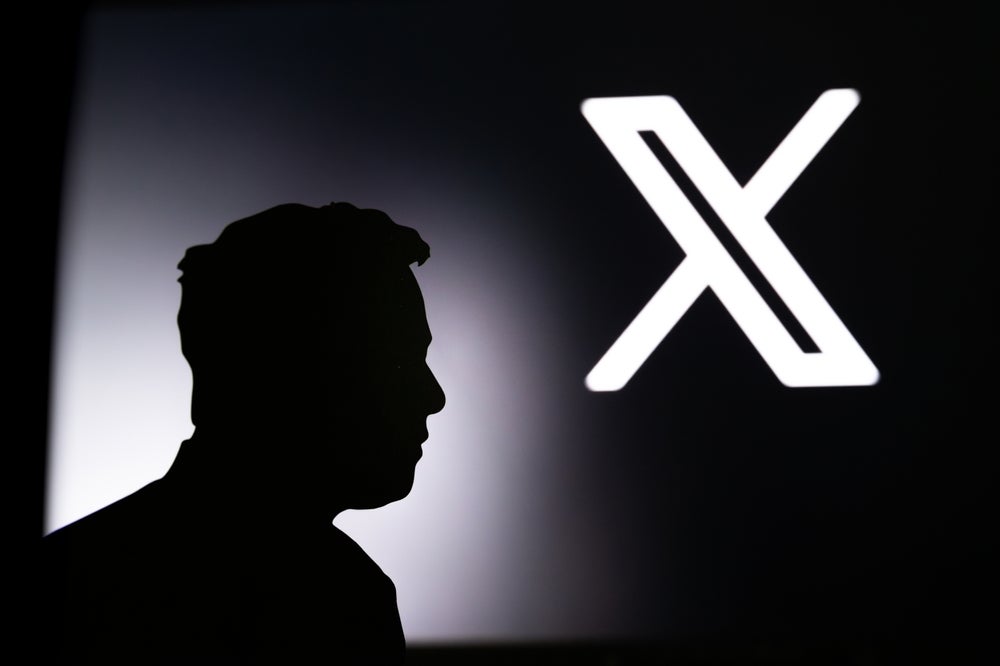Upon completing the $44bn acquisition of Twitter in October 2022, Elon Musk took the company private.
Since then, it has been impossible to tell based on share price how much Twitter (now “X”) is worth as it no longer trades shares.
However, if the platform’s popularity with users is anything to go by, the company is not doing as well as its owner might have hoped, with the Guardian reporting in March 2024 that the platform had lost 23% of its US-based users between November 2022 and February 2024.
Advertisers have also been reducing their footprint on X to such an extent that X has launched a lawsuit against marketing bodies and major advertisers including Unilever and Mars in August 2024. The company and its owner believe that advertisers are engaging in an ‘illegal’ boycott of the X platform. But why are they leaving in the first place?
Brand safety and what makes companies money
In most cases, a company’s principal objective is to make money, to maximise its profits. To sell to as many consumers as possible a company must appeal to as many consumers as possible.
This means tailoring the company’s image to suit the perceived desires of the target audience. What this looks like specifically can change depending on the time of year and where in the world a company operates.

US Tariffs are shifting - will you react or anticipate?
Don’t let policy changes catch you off guard. Stay proactive with real-time data and expert analysis.
By GlobalDataThese differences are most notable at times like Pride Month when many companies that operate in Europe and the Americas change their branding to feature rainbow colours and then promptly change their branding back when the month is over.
How a company advertises itself reflects the political and social norms of the societies it operates in, within what is called the ‘Overton window’, named after the late US political scientist Joseph Overton. Companies can achieve brand safety only by staying within the bounds of the Overton window, ensuring the best chance of making the most money.
Since the Elon Musk takeover, X has threatened the brand safety of advertisers using the platform by shifting its Overton window to the political right. If a brand’s only concern was selling to people on X then that wouldn’t necessarily be an issue, profit maximisation logic dictates that their advertising would adjust accordingly.
However, there is a world outside of X and companies do not want to be seen next to content that falls outside of society’s Overton window. This has included antisemitic conspiracy theories and inciting far-right violence.
So how did X become a platform that welcomes such content?
A skewed definition of ‘free speech’?
When Musk took over, he promised X would become a bastion of free speech, a platform that wouldn’t ‘cancel’ people for their views and would encourage debate and discourse.
The belief in the marketplace of ideas led him to reinstate the formerly banned accounts of controversial figures including far-right US Representative Marjorie Taylor Greene, former US President Donald Trump, and self-proclaimed misogynist Andrew Tate. Musk also fired half of X’s moderators and a third of its ‘Trust and Safety’ team upon taking control of the company. His actions directly opened the floodgates, filling the platform with hate speech almost overnight.
At a very fundamental level, Elon Musk presents as someone who doesn’t understand what free speech is.
That someone can say whatever they like without moderation is not what makes speech free.
Even if one falsely assumes that the First Amendment of the US Constitution applies everywhere in the world (it doesn’t), one doesn’t have to be a constitutional scholar to know that inciting violence and being racist isn’t protected speech.
Spreading misinformation, knowingly or otherwise, isn’t protected speech. However, Musk allows these kinds of speech on his platform. He has pushed his platform beyond the bounds of the Overton window and brands no longer feel safe; it’s not that they don’t like him specifically and want to censor him, they just don’t like how his platform makes them look when their ads appear next to Hitler apologist content.
What’s next for Musk and X?
In what would be an amusing turn of events, X’s financial future may rely on Musk reversing all of his changes to the platform. He took out sizeable loans to buy Twitter and those loans need to be paid back.
Between X’s declining popularity and the 12.65% YTD decline of Tesla shares that make up the bulk of Musk’s net worth, paying back those loans will prove increasingly difficult. And so, just like every other platform that started life as unmoderated bastions of free speech, returning X to a moderated environment may well be necessary to make any money.
Moderation is, after all, a fundamental value of human society, particularly democratic society. While it might appear slightly counterintuitive, free speech is ensured by moderation as it keeps those who would kill free speech from gaining power. All social media platforms should bear this in mind and regularly and rigorously enforce moderation for the health of their communities and their accounts.









